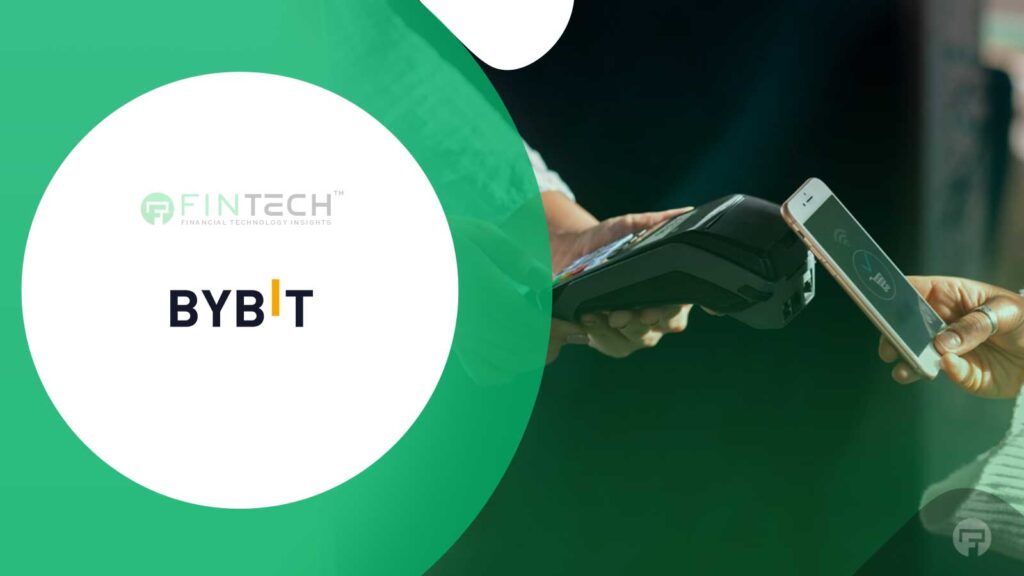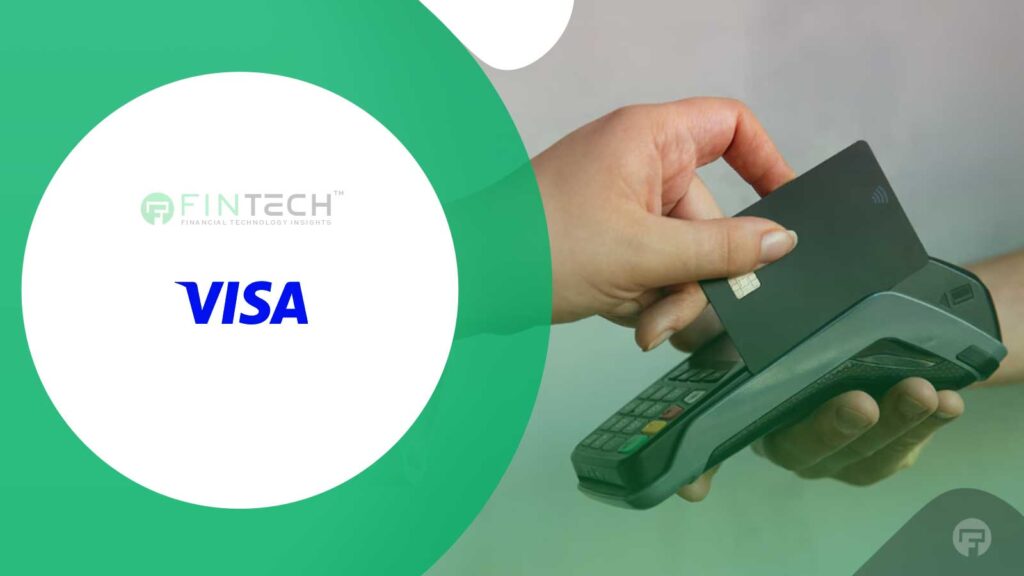Introduction
The influence of fintech on retail banking trends is extensive and profound. Fintech has improved consumer experiences, facilitated digital transformation, heightened competition, and introduced novel regulatory obstacles. Banking has become more user-friendly and accessible as a result of the adoption of mobile banking applications, personal finance tools, and AI-driven solutions. Traditional banking models are being transformed by digital-only banks and automation, while fintech has heightened competition and encouraged established banks to innovate.
Impact of Fintech on Retail Banking Trends

Improving Customer Experience
Customer experience is one of fintech’s biggest influences on retail banking. Innovative fintech technologies make banking easier and more convenient for consumers.
- Mobile Banking Apps
Mobile banking apps from fintech companies let clients manage their funds on their phones. These apps provide account checks, money transfers, and bill payments. Mobile apps make banking easy and convenient, unlike traditional banking, which requires a branch or desktop computer. People now deal with banks differently due of this ease. - Financial Management Tools
Fintech also offers personal finance management tools. Users may track their spending and financial wellness with budgeting applications, expense trackers, and investing platforms. Data analytics-based guidance and recommendations help people make smart financial decisions. - 24/7 Support
Many finance companies provide 24/7 chatbot and virtual assistant support. Users get fast help from these technologies, which can address many questions and difficulties without human participation. This accessibility and responsiveness is a big improvement over typical bank customer service, which has limited hours and extensive wait periods.
Read: Top 10 FinTech Cybersecurity Challenges in 2025
Promoting Digital Change
Fintech has advanced retail banking digitization. Traditional banks must adapt to digital to compete. This transition requires new technologies and banking process rethinking.
- Digital-Only Banks
Fintech has led to the growth of digital-only banks, or neobanks. These internet banks have no branches. They offer savings, checking, loans, and investments. Online banks can provide fewer fees and greater interest rates because they don’t have physical branches. Traditional banks evolve and improve their digital products because they prioritize technology and customer experience. - Automation, AI
Automation and AI are key to finance solutions. AI algorithms can detect fraud, assess credit risk, and deliver individualized financial advise by analyzing massive data sets. Automation simplifies banking processes including transaction processing and customer service. Banks can improve efficiency and customer service by using these technologies. - Blockchain Tech
Blockchain technology, which powers Bitcoin, may be used in retail banking. Blockchain records transactions securely and transparently, minimizing fraud and enhancing trust. Some banks are investigating blockchain for cross-border payments, smart contracts, and financial transaction security.
Read: Top 10 Strategies for Effective Fintech Branding
Increasing Competition
Retail banking rivalry has increased due to fintech. Fintech startups and technology businesses compete with traditional banks for financial services.
- Innovations
Fintech disrupts banking models with disruptive technologies. For instance, peer-to-peer lending services let people lend and borrow money without banks. Fintech tools like crowdfunding allow enterprises to raise funds directly from investors. Innovations that circumvent banks create new opportunities and competition. - Partnerships and Collaboration
Instead of competing, several traditional banks have partnered with fintech businesses. Bank-fintech partnerships enable the integration of new technology and services into existing infrastructure. A bank may cooperate with a fintech business to develop a new digital payment option or upgrade its mobile app. - Customer Expectations
Customer expectations have changed as finance companies establish new user experience and convenience norms. Consumers increasingly want fast, convenient, and personalized banking. Traditional banks must achieve these standards to compete. Established banks have invested more in technology and innovation due to this pressure.
Regulations
The fast expansion of fintech has presented regulatory issues for both fintech and traditional institutions. New technology and services must comply with financial regulations to safeguard consumers and maintain stability.
- Regulation Compliance
Fintech companies face complex regulations. Financial regulations differ by jurisdiction and involve data privacy, anti-money laundering, and consumer protection. Financial industry confidence and credibility depend on compliance with these regulations. - Data Security and Privacy
Data privacy and security concerns rise with digital technology use. Fintech companies manage sensitive financial data, and breaches or abuse can have catastrophic consequences. To protect customer data, regulators have passed tighter data protection regulations like the GDPR in Europe. Fintech and traditional institutions must invest in cyber security. - Innovation versus Reg
Balancing innovation and regulation is difficult. Regulators must maintain financial stability and consumer protection without strangling innovation with new technologies. Fintech companies and regulators must collaborate to build frameworks that enable technological advances while ensuring financial system safety and fairness.
Read :Top 5 Reasons Why Sysdig Is Used by Goldman Sachs
In What Ways Can Fintechs Transition To Sustainable Growth?
Fintechs are currently operating in a novel environment. They are unable to continue to prioritize development at any expense. In light of the recent liquidity constraints, fintechs prioritize profitability over growth in consumer adoption numbers or total revenues.
McKinsey conducted a study in 2019 that examined the performance and development patterns of the world’s 5,000 largest public companies over the previous 15 years.
- Pricing discipline.
- Remain compliant, nimble, and flexible while managing costs to adapt to the new funding environment.
Based on a stable foundation, growth is quantified. - Before expanding, guarantee that the primary business is robust and stable, with a targeted and proven market fit.
- Programmatic mergers and acquisitions. Strategically pursue M&A and establish mutually beneficial partnerships through a programmatic strategy that is anchored in value sharing, with incumbents and other fintechs.
- Maintain the continuity of the culture. Preserve the culture, innovation, and agility that have driven disruption to this point.
What Is the Impact of Fintech on the Financial Landscape of US?
- Digital payments are experiencing a surge in popularity in the United States. It is anticipated that digital payments will constitute more than half of all payments made in the United States by 2023.
- Neobanking: Neobanks are digital-only banks that are competing with traditional banks by providing more convenient and affordable banking services.
- Digital lending platforms are simplifying the process of obtaining loans for both consumers and enterprises.
- Robo-advising: Automated investment platforms that offer portfolio management services and investment advice are known as robo-advisors.
- Blockchain and cryptocurrency are emerging technologies that are having a substantial impact on the finance industry.
- Additional emerging trends: InsurTech, RegTech, and Open Banking are additional emerging trends in the US fintech market.
A substantial growth projection for financial technology revenues is disclosed in a recent report by Boston Consulting Group (BCG) and QED Investors. The prognosis predicts a sixfold increase, with a projected increase from $245 billion to $1.5 trillion by 2030. The fintech sector, which is currently estimated to be worth $12.5 trillion and accounts for 2% of the global financial services revenue, is on the brink of expanding to 7%. Banking fintechs are anticipated to play a substantial role in this expansion, contributing nearly 25% to the global banking sector’s overall valuations by 2030.
What Is the Impact of Fintech on the Financial Landscape of LATAM?
Fintech has revolutionized the financial sector in Latin America over the past decade by introducing innovations in lending, remittances, insurance, and regulation and compliance. This paper investigates this development by concentrating on both fintech services and regulation. By employing country- and bank-level data to investigate the macro-critical impact of fintech, it has been discovered that the banking sector’s competition and inclusion have been significantly enhanced by the proliferation of financial technologies in Latin America.
What Is the Impact of Fintech on the Financial Landscape of UK?
London has played a critical role in the United Kingdom’s FinTech success story. The world’s highest concentration of financial and professional services firms is found in the second highest ranking FinTech ecosystem globally. It is also appealing to investors: In 2020, the city attracted $4.1 billion in FinTech venture capital, which accounted for 94% of the UK’s FinTech venture capital. The data has been taken from Deloitte.
WealthTech (including PFM and cryptocurrencies) and payment technology are the primary pillars of the UK, which account for over 50% of all UK FinTechs altogether. The WealthTech specialism is predominantly driven by London, where 77% of WealthTech businesses are located, and a robust cluster in Scotland. Around half of the UK FinTechs are clustered in London, with a significant presence in the Pennines cluster and Scotland. Payments enterprises comprise 17% of the FinTech sector.The data has been taken from Deloitte.
What Is the Impact of Fintech on the Financial Landscape of Africa?
Kenya’s fintech penetration is among the highest in the world, largely due to the phenomenal success of a single fintech company: M-Pesa. M-Pesa, which was released in 2007, simplified the process of transferring money between Kenyans and, subsequently, individuals in other countries, using their mobile phones to make payments in a reliable and timely manner. The majority of Kenyans promptly embraced it.
The number of tech start-ups in Africa tripled between 2020 and 2021, reaching approximately 5,200 companies. Fintechs comprise just under half of this total. Cash is utilized in approximately ninety percent of transactions in Africa, indicating that there is substantial potential for expansion. We have projected that African fintech revenues could exceed eight times their 2022 value by 2025 if the sector as a whole achieves comparable levels of penetration to those observed in Kenya.
In the future, we expect that the growth opportunity in African fintech will be primarily concentrated in 11 main markets: Cameroon, Côte d’Ivoire, Egypt, Ghana, Kenya, Morocco, Nigeria, Senegal, South Africa (which is home to the continent’s most mature banking system), Tanzania, and Uganda. Collectively, these markets comprise 70% of Africa’s GDP and 50% of its population.
Read: Top 5 Strategies for Cloud Security Regulations in Financial Services by Sysdig
The following are four obstacles that emerging African fintechs may encounter:
- Achieving profitability and scale. Infrastructure constraints, such as inadequate internet coverage, inadequate mobile and internet penetration, and inadequate payment rails (the underlying infrastructure that facilitates transactions), may restrict the total addressable market (i.e., the number of viable customers) for African fintechs. Additionally, fintechs may encounter challenges in scaling due to diminished disposable income and diminished consumer loyalty.
- The velocity of regulation evolution varies among countries. In general, fintechs encounter significant challenges in guaranteeing business continuity and conformance across markets due to the complexity and variability of regulations.
Scarcity management. African fintechs are experiencing a decline in funding following a record-breaking year in 2021. - However, fintechs are unable to afford to impede their advancement, particularly as incumbents begin to catch up. This implies that African fintechs will need to reduce their expenditures in order to adapt to the new venture funding landscape.
- Establishing a strong foundation for corporate governance. A robust corporate governance structure can offer stability, clarity, and direction, particularly during periods of adversity, in an uncertain and fragmented regulatory, socioeconomic, and political environment. A distinct talent strategy, productive stakeholder engagement, and the development of a strong culture are all components of strong corporate governance, which is designed to enhance the organization’s capabilities.
What Is the Current Status of Fintech in Europe?
The economic uncertainty that resulted from COVID-19 had a significant impact on fintech in Europe. However, fintechs are expected to continue to expand in importance and influence for both the economy and its consumers in the long term. In each of the seven major European economies, as measured by GDP, at least one fintech is among the top five banking institutions.
However, fintech has not advanced at the same rate in all European markets.
The maturity and performance of countries vary significantly, with a significant disparity between the top one-third and the rest. Sweden and the United Kingdom are two nations that are particularly noteworthy for their exceptional fintech ecosystem performance. The potential benefits of the fintech ecosystems in all European countries performing at the same level as the best in the region would be substantial. The number of fintech jobs would increase to over 364,000, the volume of funding would nearly double to nearly €150 billion, and valuations would soar to nearly €1 trillion.
The following are the methods by which fintechs can be advantageous to European stakeholders:
- Fintechs are appealing to European consumers due to their ability to provide superior service at a reduced cost. For instance, traditional banking service institutions may charge rates that are only 10% of the cost of international remittances.
Disruptive innovation and development in the financial ecosystem as a whole are facilitated by fintechs. Fintechs are generally more agile and responsive than incumbents, which enables them to introduce new products and services at a significantly speedier pace (the average time to market for fintechs is as low as two months, in contrast to the 12-month average for incumbents). - Fintechs are a significant source of potential development for the overall economy. Fintechs have generated approximately 134,000 employment in Europe and have a total valuation of nearly €430 billion as of 2022. That is greater than the aggregate market capitalization of Europe’s seven major publicly traded banks.
In order for the European financial system to realize the potential that fintech has made possible, stakeholders, including public institutions, incumbents, and fintech upstarts, must pool their resources by establishing suitable enabling structures and mechanisms.
What Is the Future of Fintech in the Middle East, North Africa, and Pakistan ?
In recent years, the Middle East, North Africa, and Pakistan (MENAP) has experienced a significant increase in fintech investment, with an approximate 36% annual increase from 2017 to 2022.
The following are five categories of fintech enterprises in MENAP.
Fintech start-ups that are locally developed. Local fintech start-ups are not only addressing payments, lending, insurtech, and investments, but also addressing a variety of consumer and business requirements, including home buying, payment apps and wallets, and merchant payment solutions. Fintech companies that operate internationally. In MENAP, established international fintech firms have initiated operations, which has facilitated consumer adoption and stimulated competition. Banks. Digital-only offerings have been rapidly implemented by prominent banking institutions. These include Weyay Bank, a digital, youth-oriented bank by the National Bank of Kuwait; Liv, a digital lifestyle banking app from Emirates National Bank of Dubai and others.
Additional financial institutions that are not banks. Mobile applications and digital portals have been implemented by established payment processors, exchanges, remittance services, and other conventional infrastructure providers. In certain instances, they have maintained partnerships with fintech startups. Fintech companies that operate across multiple sectors. Mobile wallets, mobile payments, and branchless banking services are among the broader offerings that large companies with a dominant market share, particularly in the telecommunications sector, have expanded beyond mobile currency.
Despite the global decline in fintech valuations that occurred in 2022, we anticipate that the market in MENAP will continue to expand. We anticipate that fintech revenue in MENAP could reach $4.5 billion by 2025. The realization of this potential is a separate narrative. In order for fintechs to further their involvement in the daily lives of consumers and businesses in MENAP, they will need to deploy capital, collaborate with regulators, and cultivate talent and partnerships.
Advantages of Fintech on Retail Banking
- Convenience and rapidity: Fintech products are typically delivered online, making them more convenient and efficient for consumers to access.
- Larger selection: A wider selection of products and services is available to consumers, as they can be purchased remotely, irrespective of their location.
- Reduced prices: Fintech companies may be able to offer consumers more affordable bargains by not investing in physical infrastructure, such as a branch network.
- Additional personalized products: Fintech companies can capture and store a greater amount of customer information through technology, which may enable them to provide consumers with more personalized products or services.
- Potential hazards: Uncertainties regarding rights: Fintech companies may be new to the financial industry and employ distinct business models from traditional providers. This can complicate the process of determining which ones are regulated and what your rights are in the event of an incident.
- Making a hasty decision: The ease with which consumers can make quick, uninformed decisions may be facilitated by financial products that are purchased promptly online without ever meeting anyone in person.
- Risks associated with technology: Your exposure to technology-based hazards may be increased if you purchase financial products online. For instance, you may be the victim of cybercrime or your personal data may be misused.
- Financial discrimination: Although technology improves the accessibility and selection of products for the majority of consumers, it may exclude those who are unfamiliar with the internet or devices such as smartphones, tablets, and computers.
Read: Fintech Marketing: Top 10 Power Strategies to Accelerate Growth
Thanks for reading!
To share your insights with the FinTech Newsroom, please write to us at news@intentamplify.com








